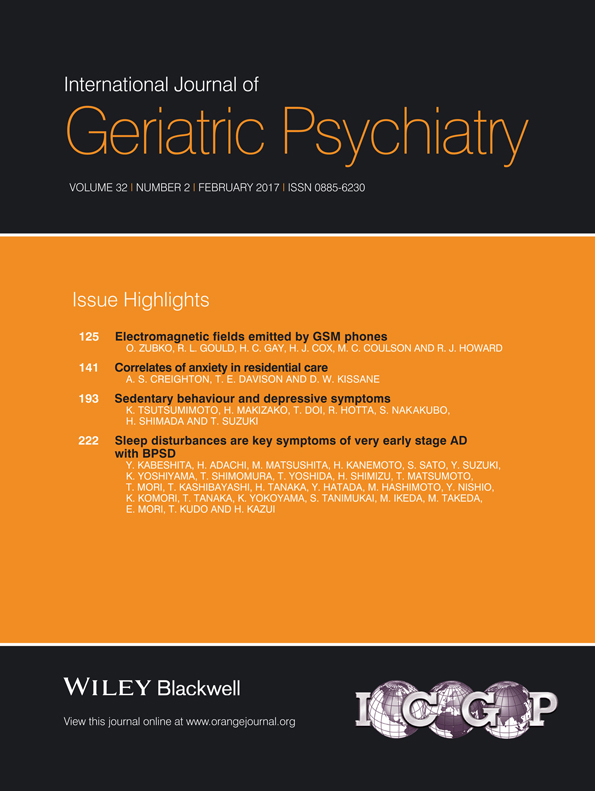Depressive symptoms in early- and late-onset older bipolar patients compared with younger ones
Abstract
Objectives
The aim of this study was to determine clinical and outcome differences between older bipolar patients with early onset (EO) and late onset (LO) of the illness and between younger and EO older patients with a bipolar disorder under long-term treatment in an outpatient clinical setting.
Methods
Three hundred ninety-five bipolar I and II outpatients were followed up for up to 7.7 years. Of these, 213 younger (<50 years) and 88 older (>60 years) patients were included. In the older subsample, 50 EO patients (onset <50 years) versus 38 LO patients (≥50 years) were analyzed. Likewise, younger versus EO older patients were compared.
Results
The likelihood of LO older patients of being bipolar II was higher than for EO older patients. They were also diagnosed earlier than EO older patients. No other clinical differences at baseline and at the prospective follow-up were found. Compared with younger patients, EO older patients had more frequent depressive symptoms at baseline, suffered more major depressive episodes in the previous year and in the prospective follow-up, received more antidepressants at baseline, had higher rates of medical comorbid conditions and were less likely to be tobacco smokers.
Conclusions
Older patients constitute a meaningful proportion of bipolar patients under treatment. EO older patients suffered significantly from more frequent depressive symptoms than younger ones. LO older patients were predominantly bipolar II. So as bipolar illness progressed, depressive symptomatology became more frequent and manic episodes were less severe. Copyright © 2016 John Wiley & Sons, Ltd.




